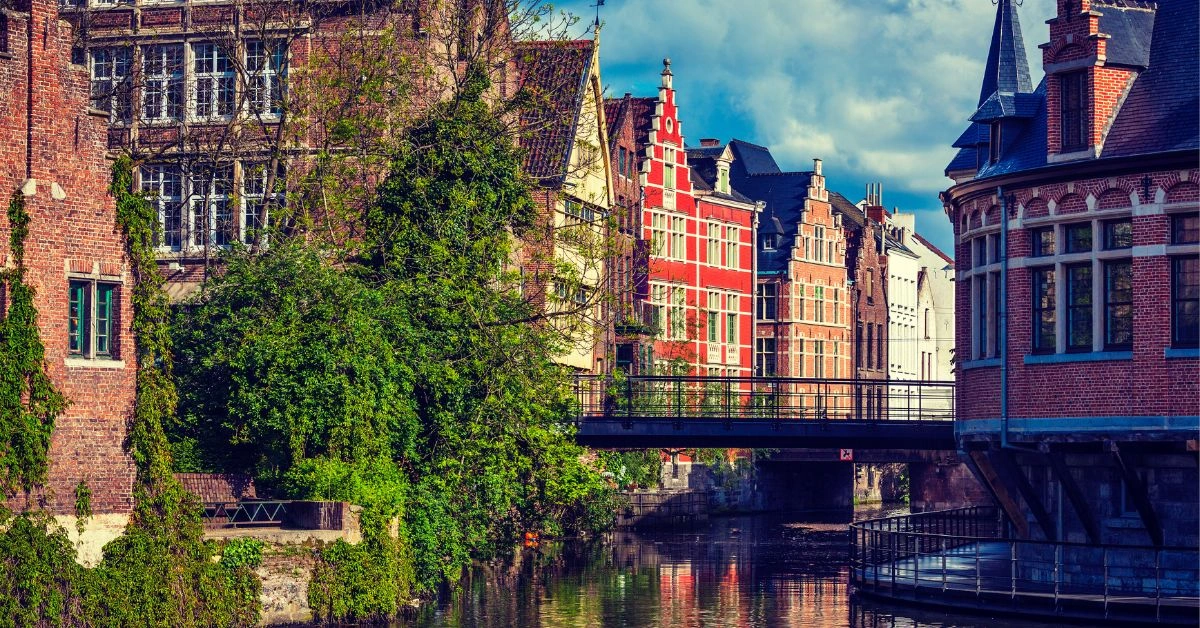Discovering the Charm of Bilzen Valere Bunckens Kerk: A Historic Gem
Nestled in the charming town of Bilzen, Belgium, the Valere Bunckens Kerk is a hidden gem waiting to be explored. This historic church has captivated locals and visitors alike for centuries with its beauty and profound significance. It stands as a symbol of faith, culture, and artistry.
The Valere Bunckens Kerk dates back to the 12th century, making it one of the oldest landmarks in the region. Originally built in a Romanesque style, it has undergone several transformations over time, reflecting the changing architectural trends and the town’s evolving history. Its enduring presence makes it an essential piece of Bilzen’s cultural heritage.
Beyond its stunning design, the church has deep spiritual roots. For generations, it has served as a place of worship and reflection for the community. From hosting regular services to being the site of important religious celebrations, it continues to play a central role in local life.
The church also holds cultural significance as a gathering space for various events. From art exhibitions to musical performances, it bridges the past with the present, creating a vibrant cultural hub. Its ability to adapt while preserving its historical charm makes it a unique attraction for visitors.
In this blog, we’ll explore every facet of this historic treasure. From its fascinating history to its architectural details and cultural importance, we’ll uncover what makes it so special. Whether you’re a history enthusiast or a curious traveler, this guide will inspire you to discover this remarkable landmark in the heart of Bilzen.
| Aspect | Fact/Detail |
|---|
| Location | Bilzen, Belgium |
| Historical Significance | Built in the 12th century, originally Romanesque, with Gothic and Baroque influences over time. |
| Architectural Style | Romanesque (original), Gothic (14th century), Baroque (later additions). |
| Construction Period | 12th century (Romanesque period). |
| Prominent Figures | Valere Bunckens contributed significantly to the preservation and enhancement of the church. |
| Spiritual Role | Continues to serve as a place of worship and reflection for the community, hosting regular services and special ceremonies. |
| Cultural Significance | Hosts art exhibitions, classical music concerts, and seasonal festivals, making it a cultural hub for the community. |
| Architectural Highlights | Romanesque arches, Gothic pointed windows, Baroque decorations, frescoes, stained glass windows, and a grand altar. |
| Restoration Efforts | Ongoing preservation of frescoes, stonework, and architectural elements to maintain its historical and structural integrity. |
| Opening Hours | Open year-round; best visited in spring and summer. Early mornings and late afternoons are quieter. |
| Entry Fee | Free of charge; donations for upkeep are appreciated. |
| Guided Tours | Available for deeper insights into the church’s history and architecture. |
| Photography | Allowed, but visitors must be respectful of ongoing services. |
| Dress Code | Modest attire recommended as it is a place of worship. Comfortable shoes for walking on cobblestone streets. |
| Nearby Attractions | Alden Biesen Castle, local cafes, restaurants, shops, and markets. |
| Best Time to Visit | Spring and summer for picturesque surroundings; quieter experience in early mornings or late afternoons. |
| Community Role | A symbol of unity and heritage for the people of Bilzen, hosting cultural events and being a witness to the town’s history. |
Historical Significance: A Journey Through Time
Early Foundations: The Birth of a Landmark
The church was built in the 12th century, during the Romanesque period. Its construction marked an important milestone for the small town of Bilzen, serving as a place of worship and community gathering. The sturdy stone structure reflected the Romanesque architecture Belgium is known for, emphasizing simplicity and strength.
Evolution Through the Centuries
Over the years, the structure underwent significant changes to match evolving architectural styles. Gothic influences were introduced in the 14th century, adding pointed arches and detailed designs. Later, Baroque touches brought ornate decorations and grandeur, showcasing the artistic trends of the era and highlighting Belgium church architecture.
The building’s growth mirrored Bilzen’s development as a cultural and spiritual hub. Each transformation added layers to its rich history, turning it into a living timeline of architectural evolution and a key part of Bilzen historical sites.
The Legacy of Valere Bunckens
Valere Bunckens, a prominent figure in Bilzen’s history, played a key role in the legacy of this sacred site. He contributed significantly to preserving and enhancing the church, ensuring it remained a vital part of the community. His efforts cemented his name in local history, and the site now serves as a testament to Valere Bunckens history.
A Testament to Faith and Resilience
Throughout wars, natural disasters, and changing times, this landmark has stood strong. It remains a symbol of faith and perseverance for the people of Bilzen. Its survival over centuries reflects the dedication of those who have cared for it and recognized its importance as one of the most iconic Bilzen landmarks.
The building’s history is not just a story of stone and mortar—it’s a tale of a community’s enduring spirit and love for its heritage.
Architectural Beauty: A Masterpiece of Design
Exterior Highlights: A Blend of Styles
The exterior is a striking display of Romanesque and Gothic architecture. The original Romanesque elements, like rounded arches and thick walls, give the building a sense of strength and simplicity. Gothic influences, added later, include pointed windows and detailed carvings that add elegance to its façade, making it a highlight among medieval architecture Belgium treasures.
The bell tower stands tall, a symbol of the site’s presence in the town. Its timeless design has made it an iconic part of Bilzen’s skyline. Surrounded by cobblestone streets and greenery, this historic building in Bilzen blends beautifully with its picturesque setting.
Interior Grandeur: Art and Spirituality in Harmony
Stepping inside reveals an awe-inspiring interior rich with artistic details. Intricate frescoes adorn the walls, telling biblical stories with vivid colors and skilled craftsmanship. Stained glass windows filter sunlight, casting colorful patterns on the floor and creating a serene atmosphere—a hallmark of Belgium’s sacred sites.
The altar, with its fine carvings and golden accents, is a stunning focal point. Statues of saints and religious icons are placed throughout, showcasing the devotion of the community and the artistry of past eras. Every detail inside reflects a deep connection between faith and art, adding to its significance as one of Bilzen religious sites.
Restoration Efforts: Preserving History
Preservation projects have played a vital role in maintaining the beauty of this historical landmark. Experts have carefully restored frescoes, repaired stonework, and ensured that the structure remains stable. These efforts honor the original craftsmanship while making the site accessible to future generations, ensuring it remains a shining example of Belgium historical landmarks.
The architectural journey of this sacred space is a testament to the skill and dedication of countless artisans and caretakers. Each element tells a story of creativity, resilience, and timeless beauty.
Cultural and Spiritual Importance
A Place of Worship and Reflection
This historic church has been a center of spiritual life in Bilzen for centuries. It continues to host regular religious services, drawing locals and visitors for prayer and reflection. Special ceremonies, such as weddings and baptisms, add to its role as a sacred space for significant life moments.
The peaceful atmosphere makes it a place of comfort and introspection. Visitors often feel a sense of connection to the generations who have worshiped there before them. Its spiritual significance is deeply rooted in the community’s traditions, making it one of Belgium pilgrimage sites.
A Cultural Hub for the Community
Beyond its religious role, this landmark is a vibrant cultural site. It hosts events like classical music concerts, art exhibitions, and seasonal festivals. These events transform the space into a lively venue, showcasing its ability to unite people through art and culture and solidifying its place among Bilzen cultural sites.
Local artists and musicians often use the site to share their talents. The combination of its historical ambiance and cultural activities makes it an unforgettable experience for attendees. This dual role enhances its value to Bilzen tourism.
A Symbol of Unity and Heritage
This sacred site has long been a gathering place for the people of Bilzen. From celebrations to moments of collective grief, it has been a witness to the town’s shared history. Its ability to bring people together reflects its role as a symbol of unity.
Even today, it fosters a connection between the past and present. It reminds visitors of the enduring power of community and the importance of preserving shared heritage. Its cultural and spiritual legacy is cherished by all who visit.
Practical Guide for Visitors
Location and How to Get There
This historic church is located in the heart of Bilzen, a charming town in Belgium. Bilzen is easily accessible by train, car, or bus, with regular connections from nearby cities like Maastricht and Hasselt. Once you arrive, the site is within walking distance of the town center.
For those driving, ample parking is available nearby. The surrounding area is pedestrian-friendly, making it easy to explore Bilzen’s quaint streets. Clear signage throughout the town ensures visitors can find the site without trouble.
Best Time to Visit
The church can be visited year-round, but spring and summer are ideal for enjoying Bilzen’s picturesque surroundings. Early mornings or late afternoons are perfect for a quiet experience with fewer crowds. Visiting during local festivals or religious celebrations can also add a unique cultural dimension to your trip.
Special services and events often bring the site to life with music and community gatherings. Check the local schedule in advance to plan your visit around these activities. Regardless of the season, this landmark offers an enriching experience and is a must-see among Bilzen sightseeing spots.
Visitor Information and Tips
The church welcomes visitors free of charge, though donations for upkeep are appreciated. Guided tours are often available, offering deeper insights into its history and architecture. Photography is allowed, but be mindful of ongoing services to respect the sanctity of the space.
Be sure to dress modestly when visiting, as it is a place of worship. Comfortable walking shoes are recommended for exploring the cobblestone streets around the site. Bringing a camera is a must to capture the beauty of this historic landmark, making it a top choice among Belgium tourist attractions.
Nearby Attractions and Amenities
After exploring the church, visitors can enjoy Bilzen’s other attractions, such as Alden Biesen Castle. Cozy cafes and local restaurants nearby offer delicious Belgian cuisine, perfect for a meal after your visit. Small shops and markets add charm to the town, making it an ideal destination for a day trip.
Bilzen’s blend of history, culture, and scenic beauty makes it a delightful place to explore. A visit to this remarkable site is the perfect starting point for discovering this enchanting town.
Conclusion
The church in the heart of this charming Belgian town stands as a living testament to the enduring power of faith, culture, and community. From its humble beginnings in the 12th century to its present-day role as both a spiritual haven and cultural hub, it offers a glimpse into the rich heritage of the region. The intricate architectural details, the vibrant history, and the ongoing efforts to preserve its legacy make this landmark a must-see for anyone visiting the area.
Whether you’re exploring its stunning design, experiencing its peaceful atmosphere, or participating in one of its cultural events, this church offers something special for every visitor. It’s more than just a building; it’s a place where the past and present beautifully intertwine, allowing all who enter to connect with the timeless spirit of the town.
FAQs
What is the history of the church?
The church dates back to the 12th century, originally built in Romanesque style. Over the centuries, it has undergone transformations that blend Romanesque, Gothic, and Baroque influences, making it a stunning representation of different architectural styles throughout history.
Is the church still used for religious services?
Yes, the church continues to host regular religious services and special ceremonies like weddings and baptisms, maintaining its role as an important place of worship for the local community.
Can I visit the church year-round?
Yes, the church is open to visitors throughout the year. However, spring and summer are ideal for enjoying the surrounding picturesque scenery, and early mornings or late afternoons offer a quieter experience.
Is there an entry fee?
The church welcomes visitors free of charge. However, donations for upkeep are encouraged to help preserve this historic site.
Are there any guided tours available?
Yes, guided tours are available, providing in-depth insights into the church’s history, architecture, and cultural significance.
Can I take photos inside the church?
Photography is allowed, but visitors are asked to be mindful of ongoing services and the sanctity of the space.
Are there other attractions nearby?
Yes, nearby attractions include Alden Biesen Castle, along with local cafes, restaurants, shops, and markets. The town offers a delightful mix of history, culture, and scenic beauty, making it perfect for a day trip.
What should I wear when visiting?
As the church is a place of worship, modest attire is recommended. Comfortable shoes are also suggested for exploring the cobblestone streets around the site.







